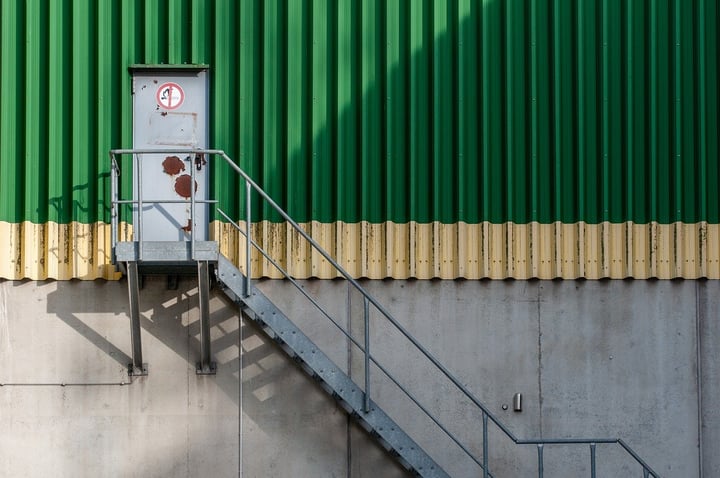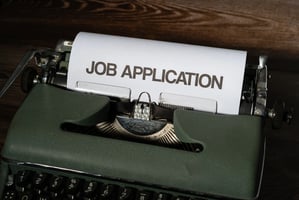How to choose between startups and corporate companies?
Different sizes for different objectives 🌱 Startups As its name indicates, it's a company that launches and starts its business in a market that...
Do you want to peek at the industrial landscape and its possible future? Here we offer you our predictions about how the industry has developed over time and what factors have the potential to make it go even further.
Image from pixabay
Published in Our tips

Following our realistic digital transformation trends for 2024, it is now the turn for the industry trends! These trends are closely intertwined and that is why you should keep an eye on our blog to find the third piece of this general tech trends overview.
On this occasion, we will focus on industry. A sector whose evolutions are maybe not as flashy as in the digital branch but definitely solid and relevant. Development in the industry is nowadays revolving around two pillars, can you guess them? That is right! IT and sustainability (no wonder why they are our three focuses at Ekkiden). If you want to know more about this transformation path, its past, present, and future, go ahead!
Understanding the future always demands us to look at the past. Since the 18th century, industry has rapidly evolved, incorporating innovations from each and every field to increase productivity and efficiency, and it has done so constantly and steadily. We have undergone four industrial revolutions in the scarce period of four centuries and the fifth one is upon us.
The First Industrial Revolution was born from the need to provide for a bigger population. Mass production was facilitated by the implementation of water and steam power, and this was the moment industry’s history started to be written.
The Second Industrial Revolution took place one century later, with the introduction of oil, gas, and electricity as power sources. Assembly lines were also fundamental and the internal organization for enhancing productivity and efficiency was a wide study topic at this time.
The Third Industrial Revolution is closer to our times, as it started in the mid-20th century. In this case, the revolution doesn’t consist of an energy source but of the introduction of computers, telecommunications devices, and data analytics. This changed the way industry worked, and what was expected from it and opened a world of unexplored possibilities.
But it wouldn’t remain unexplored much longer…
Once the manufacturing industry established a link with computers and the digital realm there was no turning back. In less than a century the manufacturing world made a 180-degree turn and got itself into not one, but two more revolutions!
The Fourth Industrial Revolution (or Industry 4.0) pursued the industry to be faster, smarter, and more sustainably productive. It started at the beginning of the 21st century, and it consisted of incorporating digital technologies into operations techniques and production. The idea is to leverage technologies like artificial intelligence, analytics, and cloud computing for the automation of processes and the achievement of a smarter factory. This way, people could take care of tasks other than the repetitive ones and the whole process could be monitored, the data collected, and the enhancement improved.
Here is where we are now, aren’t we? Well, not exactly.
The Fifth Industrial Revolution is already in the making. This time, Industry 5.0 focuses on the collaboration between humans and machines. Now, machines are not just automated robots that complete the repetitive tasks we prefer not to do; they are a support for completing our tasks. The goal is to merge the cognitive computing capabilities with the human intellect and creativity.
In this era, robots and small machines work hand in hand with humans towards the same goal, a more relevant one than solely increasing productivity and efficiency, like finding the balance between those two and boosting the contribution of industry to society. The well-being of the worker is located at the centre of the process, taking also into account that the available resources that the planet offers are limited. Briefly, this new revolution wants to reshape the industry by adding the human touch to the very digital fourth revolution.
This is always a difficult question, but to answer it we need to unveil what fuels industrial transformation, as the developments will respond to the needs and appointed goals.
Our industry needs to deal with two external factors that have determined its route and will continue to do so: rules and clients. Regulations are more detailed now and tailored to technologies or areas of influence. Industries need to be up-to-date with them and adapt their evolution to the relevant regulations.
The second factor is the clients. Manufacturing exists to satisfy a need and, if there is no need yet, to anticipate them and be ready. Anticipating a major (or minor) disruption in demand gives you the upper hand on the market, or at least an advantage against a potential competitor. It can be a new need or the customer expectation around a current need, but being aware of them and examining the situation is part of the winning hand if we talk about development.
Considering the market and social situation, the industry should lean on being updated, staying innovative, enhancing operational efficiency, and anticipating, both regulatory shifts and customer expectations. Having an adaptable roadmap that takes into account all these factors, we can rely on the success of said industry and its own particular growth.
Nevertheless, we should remember that the industry’s future stands on two pillars: digital transformation and sustainability. One as a way to reach the other. One as a tool and the other as a goal.
The industry has been one of the most pollutant sectors for the last centuries, but now we have the will and the tools to transform it. The objective is to become a cleaner sector without losing efficiency or quality. Some of today’s trends and its future developments are the following.
As we mentioned earlier, digital transformation is the means to shape the industry of the future. Factories will be smarter, more monitored and will rely on tools that will allow a better result with lower resource use and a custom experience. This smart industry with a human touch will come by:
2024 will bring us the answers to what direction will the industry take but for now, we have to scrutinize the current situation to extract the most important factors in industry transformation. Sustainable and digital transformation are the most demanded needs by the sector, and they can add up incredibly to the production process.
Even if topics like these seem overwhelming or difficult to address, we invite you to look at the industry landscape to detect these emerging trends as they develop. In the meantime, if you are interested in being part of the current industrial transformation, visit our jobs page. Check our blog in the coming weeks to learn more about sustainable transformation!
%20copie.webp?width=592&height=294&name=sean-pollock-PhYq704ffdA-unsplash%20(1)%20copie.webp)
Different sizes for different objectives 🌱 Startups As its name indicates, it's a company that launches and starts its business in a market that...

First things first: format, photo and contact details Let's start with the...

🎓 Opportunities to learn and evolve Humans are naturally driven by...